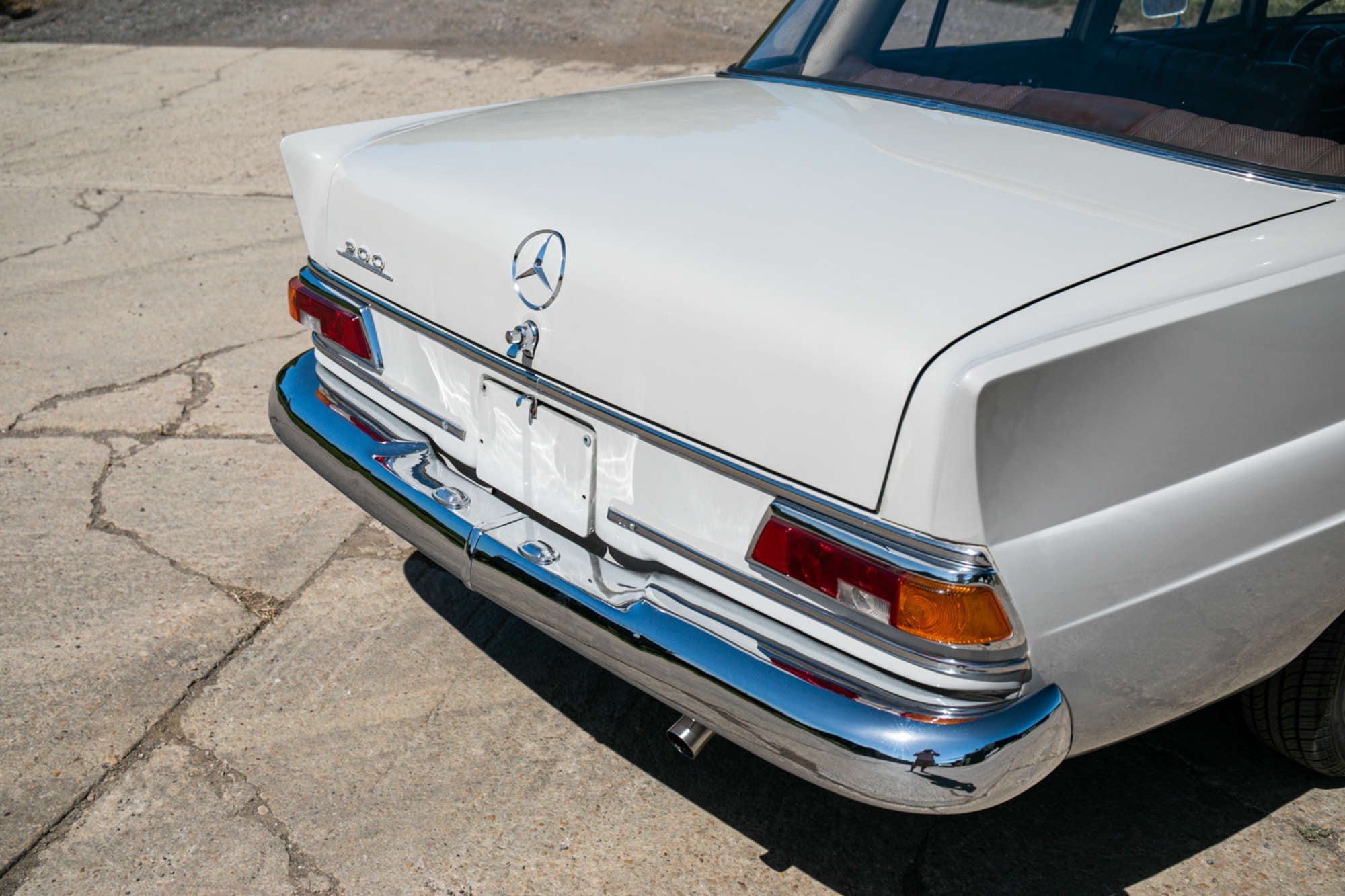The Mercedes Fintail is one of the most recognizable and beloved classic Mercedes-Benz models ever produced. But where exactly does this unusual nickname come from? To understand its roots, we need to take a closer look at both the design inspiration and the cultural trends of the 1950s and 1960s that shaped Mercedes-Benz styling at the time.
The Birth of the Fintail Design
In the late 1950s, American car manufacturers such as Cadillac and Chevrolet popularized tail fins, a futuristic design trend that symbolized speed, progress, and even space-age optimism. Mercedes-Benz, known for its more conservative European styling, decided to adapt the idea in a subtle and practical way. Instead of large, flamboyant fins, Mercedes engineers added small vertical extensions at the rear of the car. These fins served not only as a fashionable design feature but also as a practical aid, helping drivers judge the edges of the car when reversing or parking.
This clever combination of style and function gave rise to the nickname Fintail. In German, the cars were referred to as “Heckflosse,” which translates directly to “rear fin.” The English-speaking world quickly adopted the term Mercedes Fintail, and it has remained ever since.
Models That Carried the Nickname
The nickname Mercedes Fintail most commonly applies to the W110, W111, and W112 series produced between 1959 and 1968. These included a wide range of body styles such as sedans, coupes, and even limousines. The Fintail models were innovative for their time, introducing features like crumple zones, disc brakes, and improved safety designs. They represented a transition from the rounded, post-war look of earlier Mercedes cars toward the more angular, modern designs of the 1970s.
Why Enthusiasts Love the Fintail Today
Classic car enthusiasts value the Mercedes Fintail for its timeless balance between elegance and utility. Unlike the exaggerated fins on American cars, the Mercedes version remains understated and dignified. These cars are also remarkably durable, with many still on the road today. Restorers appreciate the solid engineering, availability of parts, and the unique historical character that the Fintail represents.
Owning a Mercedes Fintail today is more than just having a vintage vehicle—it is about preserving a piece of automotive history. Each model tells the story of a time when innovation, safety, and style were all brought together in a way that still captivates drivers more than sixty years later.
Conclusion
The nickname Mercedes Fintail originated from the subtle yet practical rear fins introduced by Mercedes-Benz in the late 1950s. Inspired by American car culture but reinterpreted in a European way, the design became both iconic and functional. Today, the Fintail stands as a symbol of mid-century automotive excellence, loved by collectors and enthusiasts worldwide.
About Cannstatt Ltd
At Cannstatt Ltd, we specialize in supplying high-quality classic Mercedes-Benz parts to keep your vintage vehicle running smoothly. Whether you own a Mercedes Fintail or another timeless model, we are here to provide the expertise and components you need. Visit our website to explore our wide range of parts: https://classicmercedesparts.co.uk/

